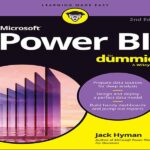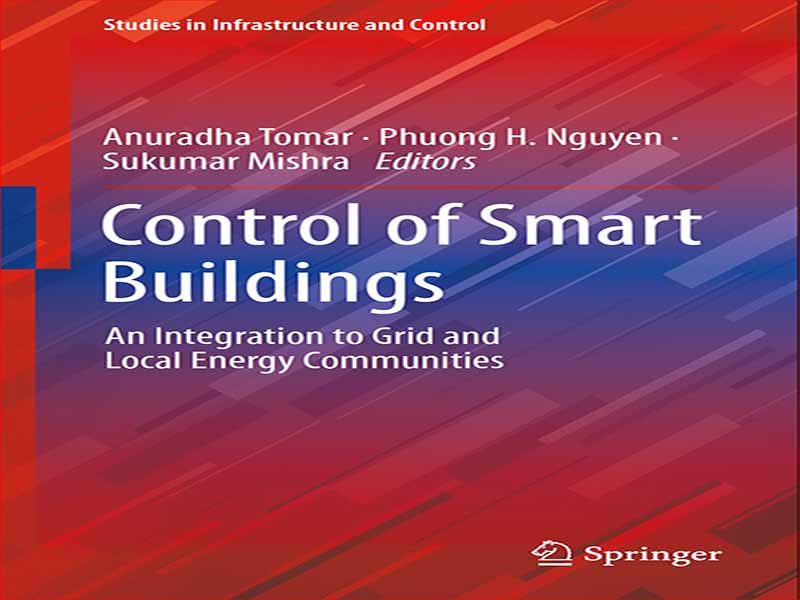- عنوان مجله: Control of Smart Buildings / An Integration to Grid and Local Energy
- نویسنده: Anuradha-Tomar,-Phuong-H.-Nguyen
- حوزه: خانه هوشمند
- سال انتشار: 2022
- تعداد صفحه: 277
- زبان اصلی: انگلیسی
- نوع فایل: pdf
- حجم فایل: 9.26 مگابایت
سیستم های انرژی جزء ضروری ساختمان ها و تاسیسات هستند که با هزینه های بالا همراه بوده و عامل کلیدی موفقیت کسب و کارها و خدمات تولید شده از ساختمان یا تاسیسات می باشند. شبکه برق نسل بعدی باید هوشمند و پایدار باشد تا بتواند همزمان با تقاضای جهانی انرژی در حال رشد و دستیابی به اهداف زیست محیطی مقابله کند. سیستم های مدیریت انرژی ساختمان معمولاً برای خودکارسازی کلیه خدمات و عملکردهای داخل ساختمان استفاده می شود که شامل مدیریت انرژی می شود. این کتاب نمای کلی از چگونگی مدیریت کارآمد انرژی ساختمان را ارائه می دهد. همچنین شامل ساختمان های تعاملی شبکه، کنترل آنها، مدیریت انرژی و تکنیک های بهینه سازی برای ارتقای درک بهتر در بین محققان و متخصصان تجاری در بخش ابزار و صنایع است. تجارب و کارهای تحقیقاتی به اشتراک گذاشته شده به خوانندگان کمک می کند تا دانش خود را در زمینه انرژی های تجدیدپذیر، مهندسی برق، مدیریت انرژی ساختمان، مدیریت تقاضا و عرضه افزایش دهند و تحلیل فنی آن ها را به شیوه ای روشنگر بیاموزند. این کتاب به سه بخش، یعنی مدیریت انرژی ساختمان، مدیریت انرژی جامعه انرژی محلی، و مدیریت انرژی ساختمان تعاملی شبکه تقسیم شده است. بخش اول به معرفی سیستمهای مدیریت انرژی ساختمان هوشمند و راههای ممکن برای دستیابی به سیستمهای انرژی بدون کربن، نظارت بر انرژی و ساختمانهای هوشمند هوشمند میپردازد. همچنین توضیح میدهد که چگونه شبکههای انتقال و توزیع با هم به عنوان یک شبکه یکپارچه مدلسازی میشوند و برای انجام تحلیل عملیات حالت پایدار به منظور ارزیابی تعامل این دو شبکه استفاده میشوند. علاوه بر این، تأثیر افزایش میزان عدم تعادل در سطح توزیع بر روی شبکه انتقال که با افزایش منابع و بارهای بسیار متغیر در سطح توزیع برانگیخته میشود نیز بررسی میشود. بر راهحلها و فناوریهایی تمرکز میکند که میتوانند مصرف انرژی ساختمان را نظارت و کنترل کنند. بخش اول همچنین مدیریت سمت تقاضا، مدیریت بار اوج و ارزیابی انعطاف پذیری را مورد بحث قرار می دهد. برنامه های مختلف مدیریت سمت تقاضا و کاربردهای آنها نیز در این بخش پوشش داده شده است.
Energy systems are an essential part of buildings and facilities, which are associated with high costs, and considered key success factor of businesses and services produced from the building or facility. The next-generation electric grid needs to be smart and sustainable to simultaneously deal with the ever-growing global energy demand and achieve environmental goals. Building energy management systems are commonly used to automate all services and functions within the building, which include energy management. This book provides an overview of how efficient building energy management can be done. It also includes the grid-interactive building, their control, energy management, and optimization techniques to promote better understanding among researchers and business professionals in the utility sector and across industries. The experiences and research work shared helps the readers in enhancing their knowledge in the field of renewable energy, power engineering, building energy management, demand, and supply management and learn the technical analysis of the same in an insightful manner. The book is divided into three sections, namely, Building Energy Management, Local Energy Community Energy Management, and Grid Interactive Building Energy Management. Section I deals with the introduction to smart building energy management systems and possible ways to achieve zero-carbon energy systems, energy monitoring, and intelligent smart buildings. It also describes how transmission and distribution networks are modeled together as an integrated network and used to do steady-state operation analysis in order to assess the interaction of these two networks. Furthermore, the influence of the increasing amount of imbalance at distribution level on the transmission network that is evoked by the increase of highly variable resources and loads at distribution level is also investigated. It focuses on solutions and technologies that can monitor and control the energy use of the building. Section I also discusses the demand side management, peak load management, and flexibility assessment. Various demand side management programs and their applications have also been covered in this section.
این کتاب را میتوانید از لینک زیر بصورت رایگان دانلود کنید:
Download: Control of Smart Buildings




































نظرات کاربران